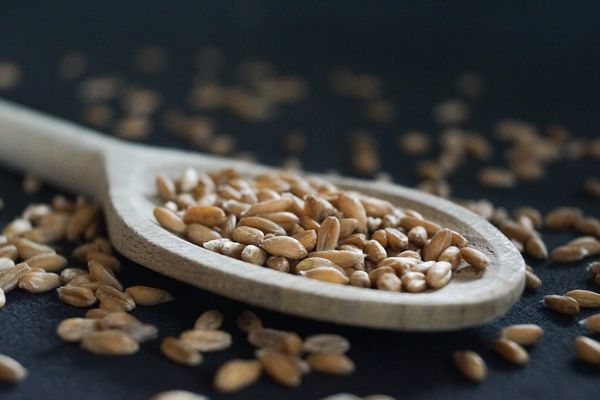
Grain mill owners should know that storing flour for a long time brings more negative than positive sides. In principle, you should always grind flour fresh. Fresh flour contains the most nutrients and is the tastiest. The longer flour is stored, the higher the risk of mold growth or that it will go “rancid.”
Therefore, the storage of flour is not necessarily recommended. It is different with cereals, because they can be stored very well and, above all, for a very long time. Nevertheless, there are a few points that should be considered here as well. For grain storage tips, we have a
HERE a blog post for you >>
However, what can become a problem for many grain mill owners and their stored grain in the summer are the hot temperatures. Of course, depending on the place of storage, at such high degrees, there may be a higher content of moisture in the air. The result: the grain becomes damp.
Grain that has become damp is more susceptible to mold, will not grind properly, and could gum up the millstones.
The grain can be dried quite easily. We have found that it works particularly well if you place the grain on a baking sheet and let it dry in the oven at about 50°C for 30-40 min. During this process, the oven door should remain open a small gap so that the moisture can escape.
The degree and time data refer mainly to rye. For other cereals, fewer minutes may be enough. Here you can simply experiment a bit, because several factors always play a role: the moisture and the type of grain, the heat of the oven, etc..
Do you have any experience with drying grain that has become damp? Let us know! We appreciate a comment or email ( to [email protected]) from you!
Aja and do you actually know our
hand mill MH4
? Our little treasure is electricity independent and grinds the flour gently, but you can learn more about it
HERE >>
That was: What to do with grain that has become damp?
Address:
Gasteigweg 25,
5400 Hallein
Austria
Opening hours:
Monday to Thursday: 09 – 16:00
Friday: 09 – 12:00
Contact:
Phone: +43 6245 83282
E-mail: [email protected]
Address:
Gasteigweg 25,
5400 Hallein
Austria
Opening hours:
Monday to Thursday: 09 – 16:00
Friday: 09 – 12:00
Contact:
Phone: +43 6245 83282
E-mail: [email protected]

